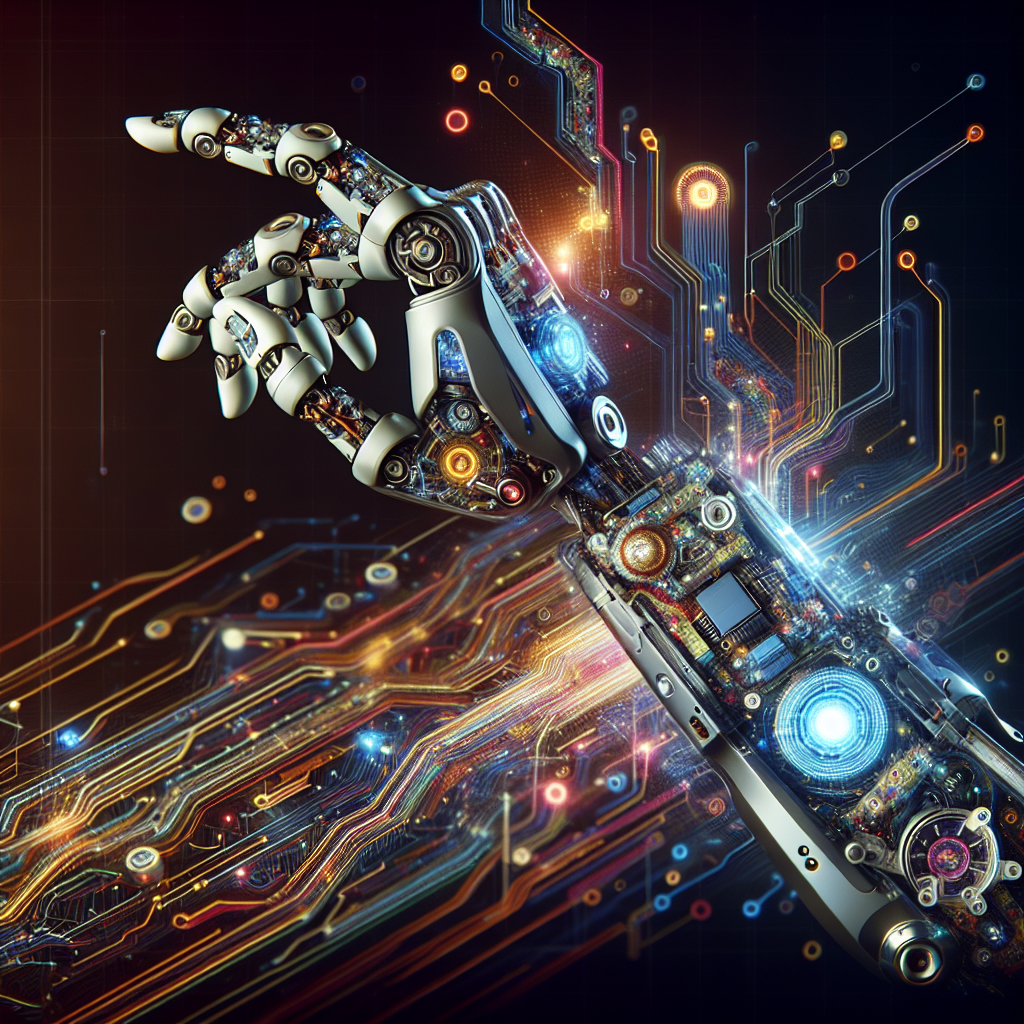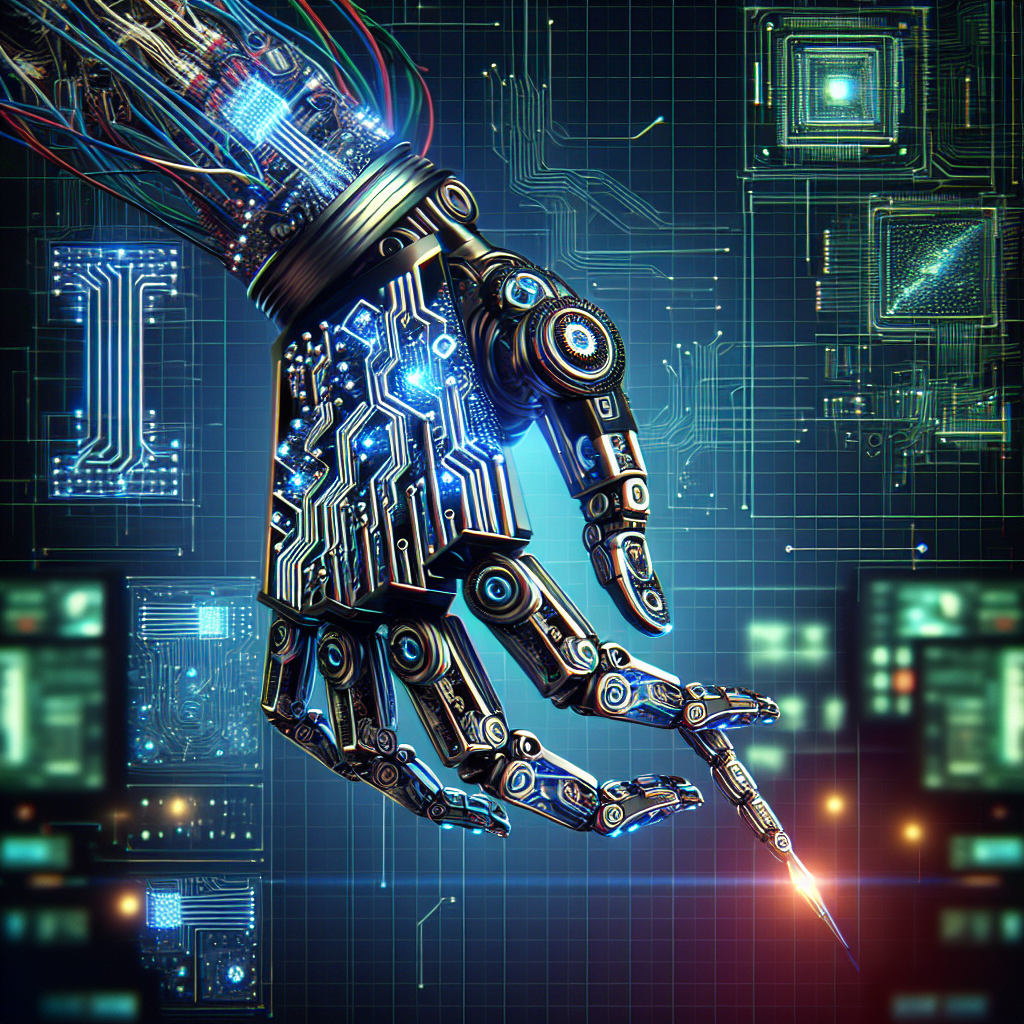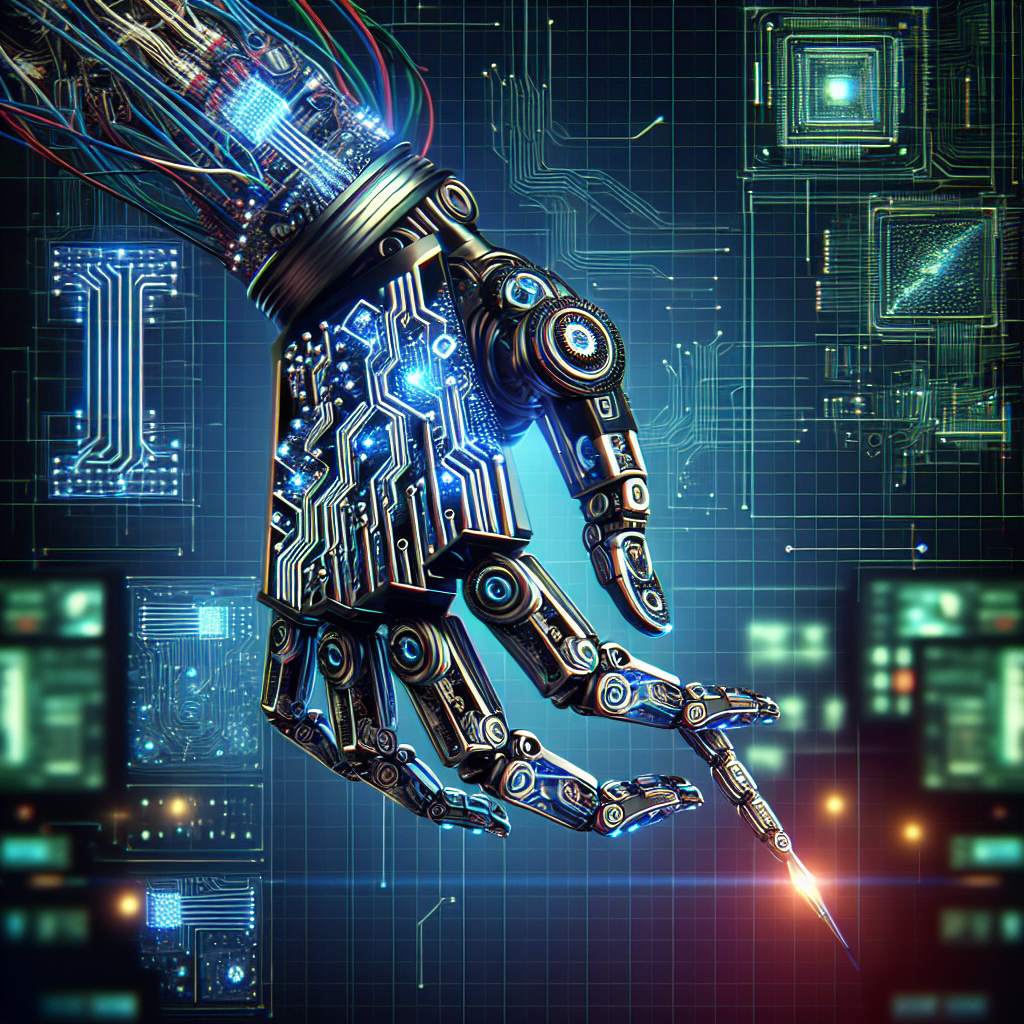Have you ever wondered about the connection between artificial intelligence (AI) and robotics? In the fascinating world of technology, AI serves as a key player in the field of robotics, enhancing the capabilities, intelligence, and decision-making abilities of these mechanical wonders. By seamlessly integrating AI into robotics, we are witnessing advancements that are revolutionizing various industries, from manufacturing and healthcare to transportation and even our daily lives. In this article, we will explore the pivotal role that AI plays in robotics and how it is shaping the future of automation.
Understanding AI
Definition of AI
Artificial Intelligence (AI) refers to a branch of computer science that focuses on creating intelligent machines capable of mimicking human intellectual abilities. These machines are designed to perceive their environment, understand complex data, learn from experiences, and make decisions or take actions based on their understanding.
Types of AI
AI can be broadly categorized into three types: narrow AI, general AI, and superintelligent AI. Narrow AI, also known as weak AI, is designed to perform specific tasks and is the most common form of AI currently in use. General AI, also referred to as strong AI, can understand and perform tasks that are typically associated with human intelligence. Superintelligent AI surpasses human intelligence and has the potential to outperform humans in nearly every cognitive task.
Robotics and AI Integration
Overview of Robotics
Robotics is a branch of engineering and science that deals with the design, development, and application of robots. Robots are machines programmed to carry out specific tasks autonomously or under human control. They are equipped with sensors, actuators, and software to interact with their physical environment.
Benefits of AI in Robotics
The integration of AI in robotics has revolutionized the capabilities of robots. By incorporating AI, robots can efficiently perceive their environment, learn from various situations, make informed decisions, and exhibit enhanced autonomy. This enables robots to perform complex tasks with greater accuracy, efficiency, and adaptability, leading to numerous benefits across various industries and domains.

AI in Robot Perception
Object Recognition
AI in robotics enables robots to recognize objects in their surroundings. Through machine learning algorithms and computer vision techniques, robots are trained to identify and classify objects accurately. This capability is crucial for tasks such as picking and sorting objects, navigation, and interacting with the environment.
Environment Mapping
Robots equipped with AI are capable of mapping their surroundings and creating detailed representations of their environment. By using sensors and sophisticated algorithms, they can generate 3D maps, detect obstacles, and plan their movements accordingly. This allows robots to navigate complex environments and avoid collisions.
Sensor Fusion
Sensor fusion plays a vital role in robot perception by integrating data from multiple sensors to obtain a more accurate and comprehensive understanding of the environment. AI algorithms help in processing and analyzing data from various sensors, such as cameras, lidars, and radars, to enhance perception capabilities. This fusion of sensor data enables robots to make informed decisions based on a holistic view of their surroundings.
AI in Robot Learning
Supervised Learning
Supervised learning is a type of machine learning where robots are trained using labeled data. With the help of AI techniques, robots can learn from examples provided by humans, making them capable of recognizing patterns and making predictions. Supervised learning is widely used in areas such as image recognition, speech recognition, and anomaly detection.
Unsupervised Learning
Unsupervised learning involves training robots on unlabeled data, allowing them to discover hidden patterns and relationships on their own. AI algorithms enable robots to cluster data, find similarities, and identify anomalies without explicit guidance. Unsupervised learning is valuable for tasks like data exploration, anomaly detection, and recommendation systems.
Reinforcement Learning
Reinforcement learning enables robots to learn through interaction with their environment to maximize a reward signal. AI algorithms calculate the optimal actions for robots to take based on feedback received when performing different tasks. This form of learning is particularly useful for dynamic environments where robots need to continuously adapt and improve their actions.

AI in Robot Decision Making
Path Planning
AI helps robots in effective path planning by determining the best possible routes to reach a given destination. By considering obstacles, environmental constraints, and optimizing for factors such as time and energy efficiency, robots can plan their movements efficiently. This capability is crucial for tasks like autonomous navigation and logistics.
Optimization Algorithms
AI enables robots to make optimal decisions by using various optimization algorithms. These algorithms help robots optimize objectives, such as resource allocation, task scheduling, and route optimization, based on specific constraints. By efficiently managing resources and maximizing productivity, robots can perform tasks more effectively and save time and costs.
Collision Avoidance
AI in robotics plays a significant role in collision avoidance. By utilizing sensors, real-time data, and advanced algorithms, robots can identify potential collisions and take appropriate actions to avoid them. This capability ensures safety in environments where robots interact with humans or other objects, minimizing the risk of accidents and damage.
AI in Robot Control
Motor Control
AI techniques enhance robot motor control, enabling precise and coordinated movements. By leveraging algorithms and feedback control systems, robots can manipulate their motors to achieve desired motions accurately. This is critical for tasks such as robotic surgery, industrial automation, and precise object manipulation.
Manipulation
AI enhances robot manipulation abilities by enabling them to grasp and manipulate objects with dexterity and precision. Through machine learning and computer vision, robots can learn optimal grasping techniques and adapt to various object shapes and sizes. This capability is advantageous in industries like manufacturing, logistics, and healthcare.
Gripping and Locomotion
AI facilitates improved gripping and locomotion capabilities in robots. By leveraging advanced algorithms and AI models, robots can analyze their environment, select suitable gripping strategies, and perform precise gripping actions. Additionally, AI helps in optimizing locomotion techniques, allowing robots to move efficiently across different terrains and adapt to diverse environmental conditions.
AI in Robot Communication and Interaction
Speech and Natural Language Processing
AI enables robots to understand and respond to human speech through natural language processing (NLP) techniques. By utilizing speech recognition, sentiment analysis, and language understanding algorithms, robots can interact with humans verbally. This capability has applications in customer service, personal assistants, and healthcare, enhancing human-robot communication.
Human-Robot Interaction
AI plays a vital role in human-robot interaction by enabling robots to understand and respond to human gestures, facial expressions, and body language. By leveraging computer vision and machine learning techniques, robots can interpret human cues accurately, leading to more intuitive and natural interactions. This is particularly important in collaborative settings and social robots.
Emotional Recognition
AI enables robots to recognize and respond to human emotions, enhancing their abilities to engage and interact with humans effectively. Through facial expression analysis, voice analysis, and physiological monitoring, robots equipped with AI can recognize emotions such as happiness, sadness, and anger. This emotional recognition capability contributes to better human-robot relationships and personalized interactions.
AI in Robot Autonomy
Autonomous Navigation
AI empowers robots with the ability to navigate autonomously in dynamic environments. By incorporating perception, decision-making, and control algorithms, robots can map their surroundings, plan paths, and adapt their movements to obstacles or changing conditions. This autonomy is crucial for applications like autonomous vehicles, drones, and delivery robots.
Task Execution
AI enables robots to autonomously execute complex tasks by integrating perception, learning, and decision-making capabilities. Through continuous learning and adaptation, robots can improve their efficiency and accuracy while performing tasks such as assembly, inspection, and manipulation. This autonomy reduces the need for human intervention and enhances overall productivity.
Adaptability and Self-Learning
AI equips robots with the ability to adapt to changing conditions and continuously learn from their experiences. By utilizing machine learning and reinforcement learning techniques, robots can update their models, refine their behaviors, and improve their performance over time. This adaptability and self-learning capability contribute to enhanced robot autonomy in diverse tasks and environments.
Emerging Trends in AI for Robotics
Deep Learning
Deep learning, a subset of machine learning, has gained significant attention in AI for robotics. Deep neural networks are capable of processing vast amounts of data, enabling robots to learn complex patterns and make informed decisions. Deep learning techniques have been successfully applied in areas such as image recognition, object detection, and natural language processing, contributing to improved robotic capabilities.
Neural Networks
Neural networks, inspired by the structure and function of the human brain, are an essential part of AI for robotics. By modeling complex relationships and optimizing network architectures, robots can process sensory inputs, extract features, and make predictions or decisions. Neural networks have been instrumental in tasks such as perception, object recognition, and speech synthesis, driving advancements in robotic performance.
Evolutionary Algorithms
Evolutionary algorithms are being increasingly used in AI for robotics to solve complex optimization problems. Inspired by natural selection and genetic algorithms, these algorithms iteratively generate and evolve solutions to find optimal or near-optimal solutions. Evolutionary algorithms have applications in robot motion planning, resource allocation, and design optimization, leading to improvements in robotic performance and efficiency.
Challenges and Ethical Considerations
Data Security and Privacy
As AI becomes more prevalent in robotics, data security and privacy concerns become significant. Robots interact with sensitive information and personal data, making it crucial to ensure secure data handling, encryption, and protection against unauthorized access. It is essential to develop robust security measures to safeguard data and prevent potential breaches or misuse.
Job Disruption and Socioeconomic Impact
The integration of AI in robotics raises concerns about potential job displacement and its socio-economic impact. As robots become more capable and autonomous, certain tasks previously performed by humans may be automated, potentially leading to job losses or changes in the job market. It is crucial to address these concerns through measures such as retraining programs, skill development, and policies that promote a smooth transition.
Ethical Use of AI in Robotics
The ethical considerations surrounding AI in robotics are essential for responsible and safe deployment. It is crucial to ensure that AI-powered robots adhere to ethical standards, respect privacy, and prioritize the well-being of humans. Transparency, fairness, accountability, and ethical decision-making should be integral parts of the design, development, and use of AI in robotics.
In conclusion, AI plays a fundamental role in robotics by enhancing perception, learning, decision-making, control, communication, autonomy, and overall performance of robots. The integration of AI in robotics enables robots to perform complex tasks with precision, adaptability, and autonomy, leading to numerous benefits across industries and domains. However, challenges such as data security, job disruption, and ethical considerations must be addressed to ensure responsible and beneficial use of AI in robotics. As AI continues to advance, the synergy between AI and robotics is set to revolutionize various sectors, leading to a future where intelligent robots coexist and collaborate with humans.
